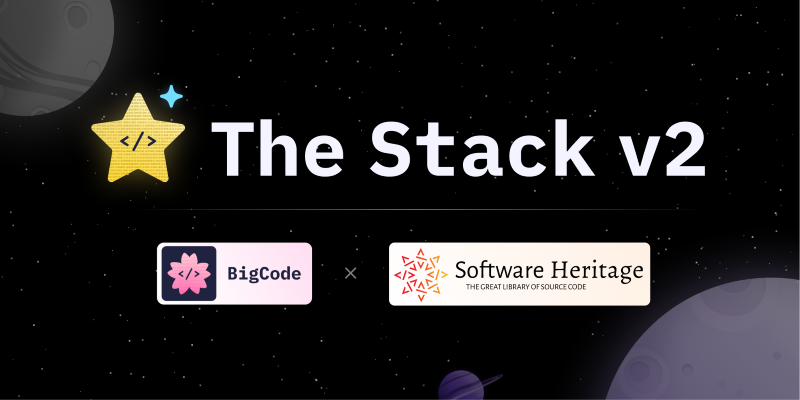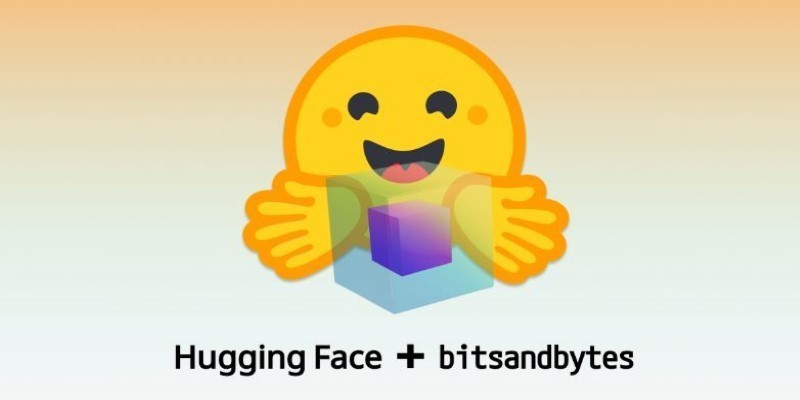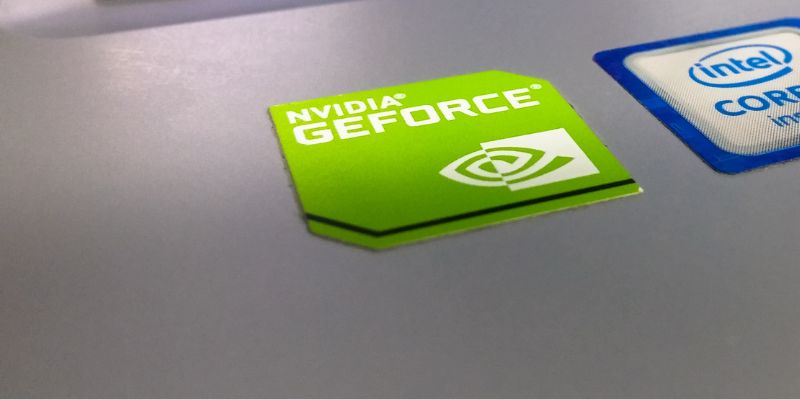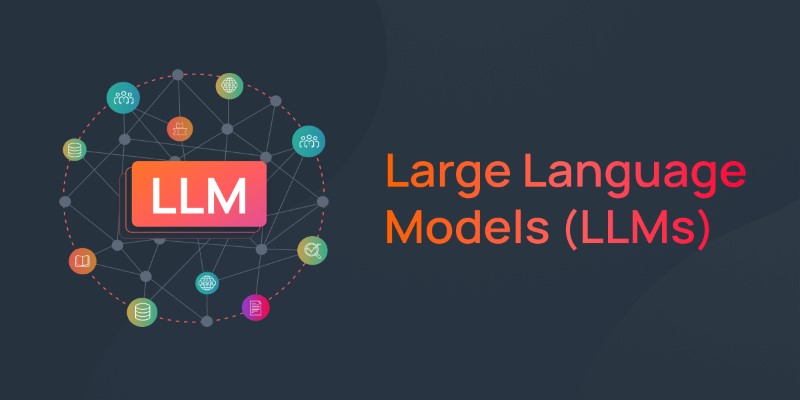Advertisement
Language models keep getting better, but not all of them are built with the same intention. StarCoder2 and The Stack v2 stand out for a reason. While many large models are hidden behind APIs or stripped of training details, these two come from an open approach that focuses on usefulness, transparency, and responsible development. There’s something refreshing about that.
StarCoder2 is part of a growing group of open code models. It's not trying to outdo every benchmark or claim some vague innovation. It’s here to be used, tested, and built on. The Stack v2, the dataset behind it, offers the kind of clean, structured data that’s rare in this space. It’s not cobbled together from whatever was lying around online. The team behind these projects made clear choices on how and what to include—and what to leave out. Let’s take a look at how they work, how they were made, and why they matter.
StarCoder2 is a family of open-weight code models developed by BigCode, a joint effort by Hugging Face and ServiceNow. It comes in three sizes: 3B, 7B, and 15B parameters. Each model was trained on a large mix of code and natural language from The Stack v2.
The goal wasn’t just to match GPT-like tools. It was to offer a high-quality alternative that anyone could use and inspect. And with permissive licensing and transparent documentation, that’s exactly what happened.
What sets StarCoder2 apart is how balanced it is. It performs well across dozens of languages—from Python and C to SQL and Bash—without leaning too heavily on just a few. Unlike many models that struggle outside of major programming languages, this one gives reasonable results across the board.
StarCoder2 is also trained to handle things like docstrings, comments, and file-level structure. It doesn’t just generate lines of code. It understands how code should be shaped inside a project.

The Stack v2 is more than just a collection of code files. It’s a carefully filtered, licensed, and labeled dataset made from open-source repositories. One of the main goals here was to avoid data that shouldn't have been used in the first place—projects with unclear licensing or private code accidentally pushed to public repos.
In The Stack v2, everything comes with clear licensing metadata. Projects using licenses that don’t allow redistribution or reuse were excluded. This might shrink the size of the dataset, but it helps avoid ethical and legal issues down the line.
Beyond licensing, the data is also organized by language and file type. This makes it easier to train models that need to handle a mix of tasks. Want your model to understand Jupyter Notebooks? It’s in there. Need plain Python scripts? Also there. Markdown docs? Covered.
The Stack v2 is split into two parts: the raw version and the filtered one. The filtered version removes files with potential security issues, generated content, and anything flagged by model evaluation tools as low quality. That way, models trained on it don’t just learn code—they learn the kind of code developers actually want to write.

Training a language model isn’t just about throwing a bunch of data into a giant network and waiting for results. There are a lot of small decisions that affect the final output. With StarCoder2, those decisions are clearly laid out.
Each model in the StarCoder2 series was trained on a different slice of The Stack v2. The larger the model, the more data it saw. But instead of just scaling everything up evenly, the team used data sampling techniques to make sure less common languages still got enough attention.
The training process also included a mixture of code and natural language. This helps the model understand questions, comments, and documentation—not just raw code. In practice, that means you can use StarCoder2 to write functions, explain what code does, or generate documentation that makes sense.
Another useful feature is the use of fill-in-the-middle training. Instead of only learning how to complete code from the end, the model was trained to understand how to add or fix code in the middle of a file. That provides more flexibility, especially in tools that utilize inline code suggestions.
StarCoder2 was trained on high-end hardware, but the open documentation includes details on batch sizes, learning rates, and architecture tweaks. For people who want to train their own models or fine-tune a smaller version, that level of transparency makes a big difference.
It’s easy to get distracted by flashy model launches and benchmark numbers. But most developers don’t need the biggest model or the most abstract research paper. They need tools they can run, study, and adapt.
That’s what StarCoder2 and The Stack v2 are about. They offer a practical, responsible way to use machine learning for code. Whether you’re building a small autocomplete plugin or exploring large-scale code analysis, you’re not locked into a black box.
And because both the model and the dataset are open, people can actually check how they work. That might not sound exciting, but it’s a rare thing these days. More and more, AI models are becoming like closed factories—you know what goes in and what comes out, but nothing in between.
With StarCoder2, if you see the model make a mistake, you can trace it back to the data or the training setup. You can retrain it with better examples. You can fine-tune it for your use case without signing up for anything or waiting for API access.
This kind of openness also makes it easier to audit bias or misuse. Because the data comes with clear metadata, researchers and developers can look into where problems might come from. It’s not just about being open for the sake of it—it’s about being able to trust the results.
StarCoder2 and The Stack v2 were built with care—care for licensing, data quality, and the actual people who will use these tools. They don’t try to do everything, but they do a lot well. And they make space for people who want to go beyond just using AI tools and actually understand them.
These projects show that it’s still possible to build useful models without hiding how they work or where they came from. That might not grab headlines, but for developers and researchers, it makes a real difference.
Advertisement

Siemens expands its industrial AI efforts, driving innovation and efficiency across manufacturing and engineering.

How Gradio reached one million users by focusing on simplicity, openness, and real-world usability. Learn what made Gradio stand out in the machine learning community

Bias in generative AI starts with the data and carries through to training and outputs. Here's how teams audit, adjust, and monitor systems to make them more fair and accurate

Discover 7 Claude AI prompts designed to help solo entrepreneurs work smarter, save time, and grow their businesses fast.
Advertisement

Tired of reinventing model workflows from scratch? Hugging Face offers tools beyond Transformers to save time and reduce boilerplate

Speed up Stable Diffusion Turbo and SDXL Turbo inference using ONNX Runtime and Olive. Learn how to export, optimize, and deploy models for faster, more efficient image generation

How 8-bit matrix multiplication helps scale transformer models efficiently using Hugging Face Transformers, Accelerate, and bitsandbytes, while reducing memory and compute needs

Learn 5 simple steps to protect your data, build trust, and ensure safe, fair AI use in today's digital world.
Advertisement

Discover how Nvidia's latest AI platform enhances cloud GPU performance with energy-efficient computing.

How the Philadelphia Eagles Super Bowl win was accurately predicted by AI, showcasing the growing role of data-driven analysis in sports outcomes

Improve your skills (both technical and non-technical) and build cool projects to set yourself apart in this crowded job market

Explore what large language models (LLMs) are, how they learn, and why transformers and attention mechanisms make them powerful tools for language understanding and generation